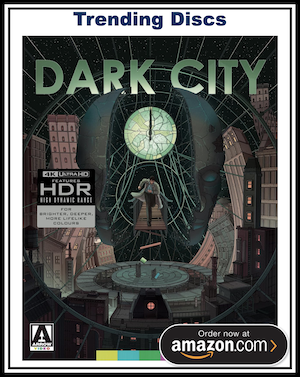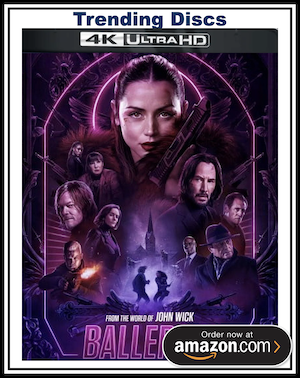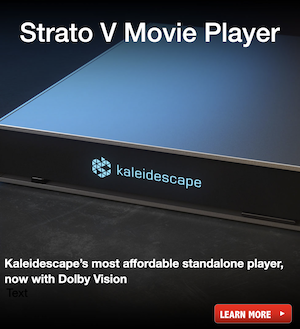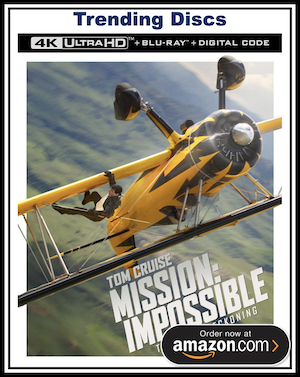Michael Scott
Partner / Reviewer
More
- Preamp, Processor or Receiver
- Yamaha TRS-7850 Atmos Receiver
- Other Amp
- Peavy IPR 3000 for subs
- Universal / Blu-ray / CD Player
- Panasonic UB820 4K UHD Player
- Front Speakers
- Cheap Thrills Mains
- Center Channel Speaker
- Cheap Thrills Center
- Surround Speakers
- Volt 10 Surrounds
- Surround Back Speakers
- Volt 10 Rear Surrounds
- Rear Height Speakers
- Volt 6 Overheads
- Subwoofers
- 2x Marty subs (full size with SI 18's)
- Video Display Device
- Sony 85 inch X950H FALD TV
Once Upon a Time in the West

Movie:
4K Video:
Video:
Audio:
Extras:
Final Score:
AV NIRVANA is member and reader-supported. When you purchase an item using our links, we might earn an affiliate commission.
Movie:

4K Video:

Video:

Audio:

Extras:

Final Score:

AV NIRVANA is member and reader-supported. When you purchase an item using our links, we might earn an affiliate commission.
Going back and watching some of these old classics reminds me just how well done they were, and how I seriously doubt we’ll ever see western’s of this caliber ever again. Like many cultural items, they are a product of their time period and culture. Something that will forever be remembered, but most likely never replicated. Back in the 1960s and 70s the western was king of the screen, dominating year after year after year, ranging from the John Wayne Hollywood epics, to the spaghetti westerns of Italy. And the biggest of those spaghetti western gods was Sergio Leone himself. Best known for his collaborations with Clint Eastwood, Leone made what is probably known as his magnum opus in the form of Once Upon a Time in the West, a sweeping epic that captured the heart and soul of the west, with the trademark “quiet but visually expressive” nature of the Spaghetti Western.
The film opens up with a mysterious harmonica playing man (the legendary Charles Bronson) getting met at the train station by a trio of gunslingers looking to put him 6 feet under (spoiler, they’re the ones ending up in a pine box) who has a beef with a murderous outlaw named Frank (Henry Fonda). Simultaneously while Frank’s men are taking on Harmonica, Frank himself is slaughtering an Irish homesteader and his family named Brett McBain (Frank Wolff) who is waiting the arrival of Brett’s new bride Jill (Claudia Cardinale). When Jill arrives to sweetwater ranch, she finds nothing but barren desert, an empty home, and 4 corpses waiting for her.
Turns out that Frank is working at behest of a large land baron who wanted McBain’s land for his own in prepartion of the railroad coming through (and naturally would make millions), and due to McBain’s reticence to seel, had hired gun Frank end them for him (and also framing a local outlaw by the name of “Cheyenne” for the crime). And like all Scooby Do villains, he would have gotten away for it if it wasn’t for a meddling stranger playing a harmonica. With the aid of Cheyenne and Mrs. McBain, Harmonica decides to take out Frank and his master once and for all.
For nearly 3 hours, Leone manages to capture your attention withtout ever feeling like the film drags or is being unnecessarily padded. Heck, by the time the final battle between Frank and Harmonica takes place in the final 15 minutes of the film, I was wondering if we were past the hour and a half mark yet! The film glides by effortlessly with characters using their entire body language to carry entire scenes, punctuated with dialog that is meant to be heard, but not recognized as the primary meands of telling the story. Surreptitious glances and sideways looks say entire monologues, leaving the viewer absolutely in awe at what is nearly an entirely visually told story.
No matter what your thoughts on the western genre itself, it’s hard to deny that Sergio Leone’s giant budget Spaghetti Western is one of the most iconic Western films of all time, rivaling Clint and Wayne’s biggest films with ease. A film that has stood the test of over 56 years and STILL awes viewers with it’s sweeping cinematography and absolutely amazing acting all the way around.
Rating:
Not Rated by the MPAA
4K Video:
 Video:
Video: 
The first thing I noticed upon viewing the disc is that something looked “off” to the image. Not that it looked bad, as the new restoration looks fantastic in many ways. Fine details are off the charts usually, and the warm sandy brown coloring of the film is lovingly restored to probably the best I have ever seen it. But the film seems a bit too sharp, and even more importantly, the grain is nearly gone. I don’t mean scrubbed gone, as if Paramount DNR’d the ever living snot out of it, but rather it seems smooshed and softened. If I brought my face up close to my 85 inch screen I could see the grain quite easily, but it was under a layer of softness that didn’t seem natural. It turns out that I wasn’t the only person noticing this trend, as Bill Hunt and several others noticed the same thing, blaming it on the encode rather than the master. Pulling up the details on my Panasonic player I can see why that assumption would be made. The 2 hour and 45 minute film is put entirely on a dual layer BD-66 instead of the more appropriate BD-100 triple layer disc. Not to mention that while it may peak in the 60 mbps range, the film very often dove into 28-40 mbps as the norm for the run time. WAAAAAAY too small for a film of this size. So, to confirm my findings I rustled up a buddy in town whom I purchased the K-Scope version for his machine and offered beer and pizza if we could watch in conjunction with the Paramount 4k UHD. Well, it looks like everyone was right, because the K-scope version looks a distinctly impressive note better. The details are sharper, the image a bit more nuanced, and above all, that thick heavy layer of grain that is present in the source material is restored once more.
By now you have to think that I”m bashing this disc ala Forrest Gump, but it is nowhere near that level. The restoration for the film is quite stunning, and the 4K UHD looks great in many ways. It’s just a rather heavily compressed disc that strips some of the most important aspects we SHOULD be seeing from the remaster in this disc. Which is especially frustrating when you consider what a high profile classic this is for Paramount and the effort they put into the master for this image. This was not a slap dash restoration, and neither was it a poor master. However, someone decided to pinch some pennies along the way and utilize a smaller disc size than was required and compression issues become the poison de jour.
Audio:

Extras:

• NEW A Look Back with Leonard Maltin
• Commentary with contributions from directors John Carpenter, John Milius & Alex Cox, film historians Sir Christopher Frayling & Dr. Sheldon Hall, and cast and crew
• An Opera of Violence
• The Wages of Sin
• Something To Do With Death
• Railroad: Revolutionising the West
• Locations Then & Now (Gallery)
• Production Gallery
• Theatrical Trailer
Final Score: 

Once Upon a Time in the West is a masterpiece of Spaghetti Western cinema, and one of my top 5 favorite westerns of all time as well. The film is intensely engaging, and blends multiple story lines together with ease, and still manages to capture the hearts and minds of new cinemafiles to this day. The 4K UHD is mostly good, though the compressed video track keeps it from being amazing like the film SHOULD have been. Decent, but upgrading is going to be entirely dependent on if the mild upgrades from the Blu-ray (as well as a step back with the grain) are worth it. Great watch at the end of the day.
Technical Specifications:
Starring: Charles Bronson, Claudia Cardinale, Henry Fonda, Jason Robards
Directed by: Sergio Leone
Written by: Sergio Donati, Dario Argento, Bernardo Bertolucci, Sergio Leone, Mickey Knox
Aspect Ratio: 2.35:1 HEVC
Audio: English: DTS-HD MA 5.1, French, German, Japeanses, Spanish (Castilian), DD 2.0 Mono, English DD 2.0 Mono (Restored)
Subtitles: English, English SDH, French (Parisian), German, Japanese, Spanish (Castilian)
Studio: Paramount Pictures
Rated: NR
Runtime: 166 Minutes
Blu-ray Release Date: May 14th, 2024
Recommendation: Great Film, Problematic Disc
Last edited:












